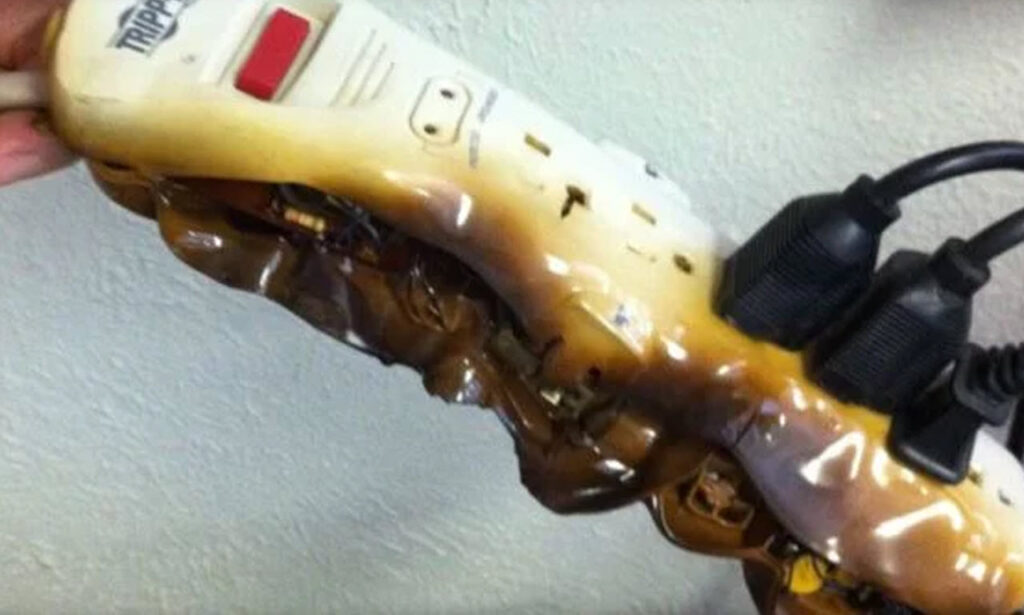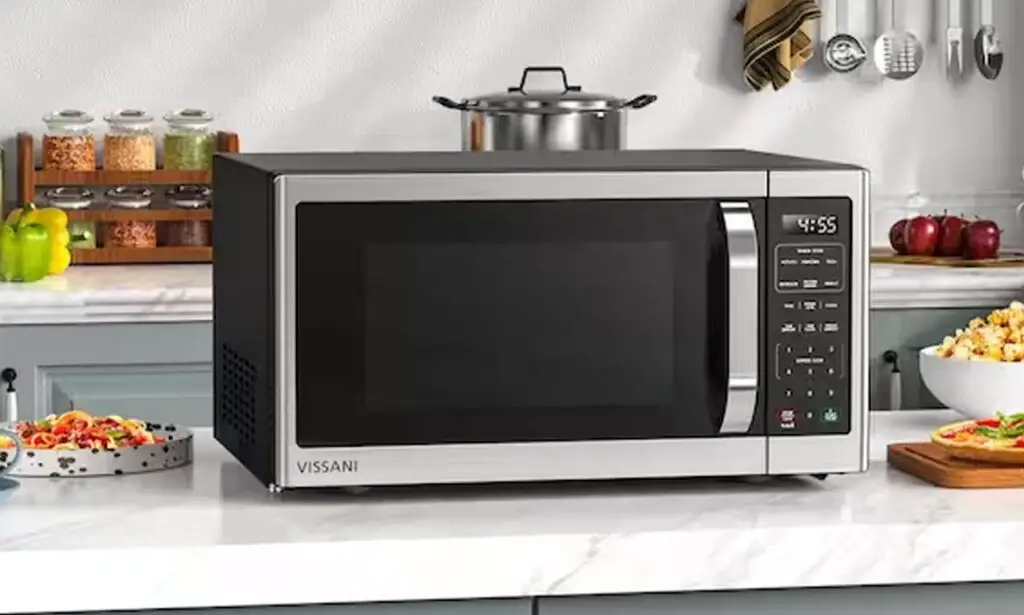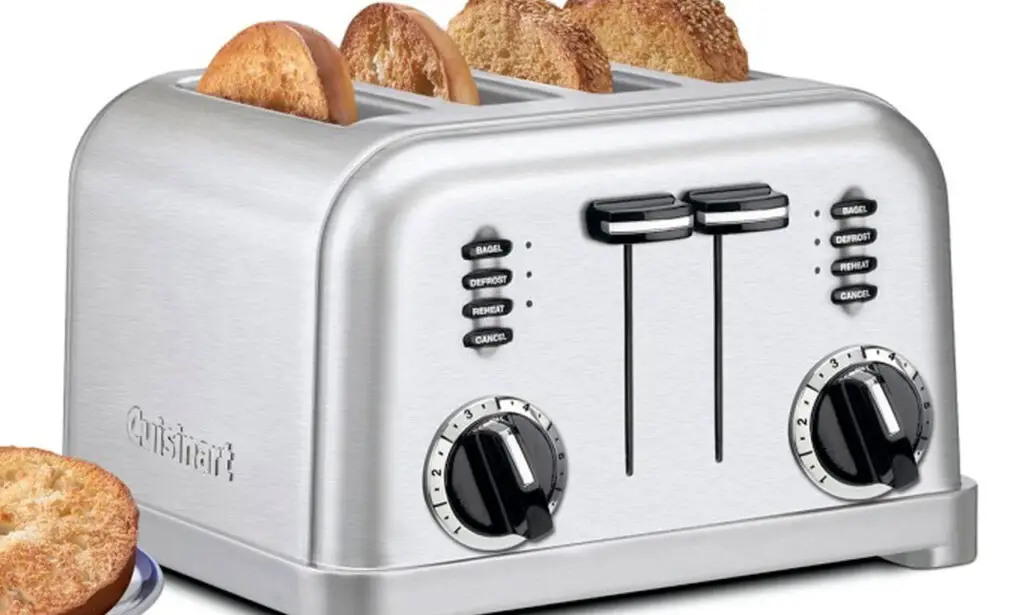
When we think of the past, one of the first thoughts that runs through our mind is how people lived without electricity. Nowadays, we can’t even imagine a day without it because all of our appliances and devices run on electricity.
The truth is, however, that most homes don’t have enough power outlets to keep everything running and charged, so most of us rely on power strips without being aware that appliances that consume a lot of energy become dangerous fire hazards when we plug them into a power strip.
Although power strips are the thing to go to when it comes to charging your phone or power an entertainment setup, there are certain devices that should never be plugged into a power strip.
Air conditioners, space heaters, toasters, and other appliances that use high wattage can easily cause power strips to overheat, which can easily lead to a fire hazard.

Even before plugging anything into a power strip consider the ammount of power they support. This is usually listed on the product itself.
High-capacity appliances need to draw a lot of power through an electrical circuit to work. Keep in mind that an appliance does not need to be large in size to draw large amounts of power.
Below is the list of appliances that should never be plugged into a power strip.
1. The oven: Even though the oven is not used continually, it is a power-hungry appliance that should not be plugged into a power strip. In fact, it should be plugged into its own wall outlet on its own circuit.
2. Refrigerator: Refrigerators require a lot of power and frequently cycle on and off which can easily overload a power strip and cause damage. Much like the oven, refrigerators require a wall outlet dedicated solely to powering the appliance.

3. Washing Machine: When turned on, washing machines pull a lot of power. This is the main reason why these appliances shouldn’t share a receptacle with any other appliance or device.
Most washing machines use a max of up to 1400 watts, putting it dangerously close to the max load of most power strips. On top of that while working, washing machines are usually left unattended and work longer hours, at least an hour, which is long enough for a power strip to overheat.
4. Heating: Portable heaters should never be plugged into a power strip because most of them use 1,500 watts of energy on their high setting and they usually run for extended periods of time.

5. Microwave: Since they consume a lot of energy when used, most microwave ovens are plugged into their own receptacle and that is always a good practice.
6. Coffee Maker: Those who own a coffee maker are not fully aware of the power these appliances use, and this is why they should never be plugged into any sort of power strip or extension cord.

7. Toaster: You may think that browning up slices of bread or bagels doesn’t require a lot of energy, but the truth is that toasters use a lot of energy when in use and they should be plugged directly into the receptacle rather than a power strip.
8. Another Power Strip: Power strips are not meant to be used in conjunction with another power strip, although many people do exactly that. This, however, violates most safety codes because it can easily lead to overloading the electrical system.
9. Electronics (Computer, TV, Router): These types of electronic devices don’t necessarily use a lot of power on their own, but they are sensitive to surges and you can find yourself with a burnt out computer or TV very quickly if you plug them into a power strip.
If you want to protect these sensitive devices from power surges, opt for a power strip that functions as a surge protector.
7 Hidden Mistakes and Bloopers You Missed in the Classic TV Show ‘Leave It to Beaver
If Life Were More Like ‘Leave It to Beaver,’ We’d All Be Better Off
While the world could certainly benefit from reflecting the values portrayed in Leave It to Beaver, even this iconic show had its share of backstage errors and quirky moments.
Setting a Higher Standard
Although Leave It to Beaver centered around a fictional family, it set a high moral standard for Americans, offering a sharp contrast to the gradual decline in the quality of many TV shows since its airing.
Running from 1957 to 1963, the beloved sitcom charmed audiences with its wholesome portrayal of family values and humor. The series was, quite simply, well-executed and genuinely funny.

Now, let’s take a look at some amusing mistakes that made their way into the final cut—what we call bloopers and goofs today. One in particular caught my attention: a surprising, unedited mistake in a well-known scene.
June Cleaver’s Calendar Mix-Up
One notable goof revolves around June Cleaver’s calendar. For decades, the Cleaver home has been portrayed as an immaculate model of organization, complete with a calendar to track important dates. However, in the 1963 episode “The Poor Loser,” the calendar on the Cleavers’ wall displayed the wrong dates. They likely used a calendar from 1961 instead.
In the same episode, when Ward and Beaver plan to attend a baseball game, a close-up of the tickets reveals a typo: “Mayfield” is misspelled as “Mayfied” in the small print, even though it’s spelled correctly elsewhere.
The Fake Bee
Special effects in the early days of TV were far less advanced than today, and Leave It to Beaver relied on practical methods. In the episode “The Silent Treatment,” Beaver is painting a door when a bee flies by. Since using a real bee would have been risky, the crew opted for a fake one, suspended by a visible string that hovers near Beaver’s face!
Jerry Mathers: “I Got in a Lot Less Trouble”
Jerry Mathers, who played Theodore “Beaver” Cleaver, became America’s favorite little brother. In a recent interview celebrating his 76th birthday in 2024, Mathers reflected on his time on the show and how it compared to his real life.
“Well, I got in a lot less trouble,” he joked. “But I had a lot of people watching me. On set, there were about 60 men and eight or nine women working, and during breaks, we’d toss around footballs and baseballs—it was like an extended family.”
Jerry Mathers’ Iconic Audition
Jerry Mathers’ audition for the role of Beaver Cleaver is the stuff of TV legend. He showed up in a Cub Scout uniform, eager to head to a meeting afterward. His straightforward attitude and natural charm impressed the show’s creators, Joe Connolly and Bob Mosher. They knew instantly that he was perfect for the role.
Ironically, after landing the part of Beaver, Mathers didn’t have much time left for Cub Scouts, as filming took up most of his days.
Tony Dow Wasn’t the Original Wally
Tony Dow is best known for portraying Wally Cleaver, the ideal older brother. However, he wasn’t the first actor cast for the role. The original actor, Paul Sullivan, was replaced after a sudden growth spurt made him look too mature for the part.

June Cleaver’s Secret Scar
Barbara Billingsley, who played June Cleaver, is famous for her immaculate appearance, often seen vacuuming in pearls and high heels. Little did viewers know, her pearls were more than a fashion statement—they covered a surgical scar on her neck. As for the high heels, they helped maintain her height relative to her growing on-screen sons.
Mathers and Dow: On-Screen and Off-Screen Brothers
Jerry Mathers and Tony Dow shared a strong bond on set that translated into real life. They remained close friends long after the series ended. When Dow passed away in 2022, Mathers expressed his grief, saying, “He was not just my TV brother but, in many ways, a brother in life.”

The “Beaver Died in Vietnam” Rumor
One of the strangest myths surrounding Jerry Mathers was a rumor that he had died in Vietnam. In reality, Mathers never went to Vietnam, though he did enlist in the Air National Guard. He was turned down by the Marines due to concerns over the negative publicity if something happened to him during the war.
The Costliest Episode
One of the most iconic episodes of Leave It to Beaver aired on May 5, 1961, where Beaver climbs a billboard and falls into a giant cup of soup. This episode cost $40,000 to produce, making it the most expensive of the series, partly due to the elaborate set design.
Breaking TV Boundaries with Bathrooms
Leave It to Beaver broke new ground by showing a bathroom on TV—something that was considered taboo at the time. In one episode, Wally carries a toilet seat, making it one of the earliest shows to feature a bathroom, even if only the toilet tank was visible.

No Laugh Tracks
The creators of Leave It to Beaver made a conscious decision not to include laugh tracks, a staple of sitcoms at the time. They wanted the humor to arise naturally from the characters, maintaining the show’s gentle, family-friendly atmosphere.
The Legacy Lives On
Leave It to Beaver was more than just a reflection of 1950s and ’60s family life. It was a treasure trove of heartwarming stories, memorable characters, and yes—some delightful bloopers.
Next time you watch an episode, keep an eye out for those little mistakes that only add to the show’s charm. And don’t forget to share your favorite moments with us on social media—we’d love to hear the bloopers that made you laugh!






Leave a Reply